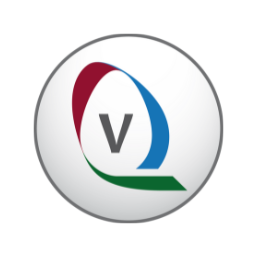Ensuring the best climate on a broiler farm can be a challenge but is essential for animals and people. When installing a heat exchanger like Vencomatic Group’s ECO Unit, preparation and test runs are very
important. Read more about how our installers go about installing an ECO Unit.
Installation of a heat exchanger: the preparations To make a success of the ECO Unit heat exchanger on your broiler farm, thorough preparation is half of the work. Before the installation begins, the customer must ensure everything is in place. The local Vencomatic
Group dealer takes care of the installation and he will also be your point of contact for maintenance or problem-solving services as part of our after care assistance. It will help to take the following aspects into account when preparing for installation:
- Concrete slab in place or to be created so the heat exchanges can be placed there in the best position.
- A crane to unload the heat exchanger and put it on the concrete slab. On average you need to think about 2,800 - 4,300kg of total weight (depending on the type of ECO Unit that needs to be lifted into position.
- Holes, are in the appropriate place in the walls so the connections for the air intake, air outlet, and possibly recirculation (in case of heating) can be installed.
- Water inlet and outlet are required for the process of heat exchanging and cleaning.
- Electrical connection, power supply, and connection of the various components and cabling.
- If heating is selected in the heat exchanger: a boiler for hot water and pipes, valves, and venting, etc.
- CSA approval on the installation.
- In case the installation takes place in freezing temperatures a ‘preheater' might be required in order to prevent the unit or even gas pipelines from freezing.
The Installation service of the ECO Unit (as stipulated in the installation manual) is generally done by the local dealer and is therefore usually part of the quotation.
Installation of a heat exchanger: after the installation
When the installation is finished, it is thoroughly tested by the installation team of the dealer. But it doesn’t stop there. The dealer will support the customer during the first production round and even beyond. Working with a heat exchanger is not difficult, in fact, climate management is made easier by the heat exchanger.
The installation team will set the basic settings together with the customer and will be there for the fine-tuning process in the weeks and months to come. The fine-tuning is something that will take time. The customer can always reach out to the dealer for questions that might pop up as things will be different compared to before. Managing the floc with minimum ventilation is a learning process, but when it is done right the impact on the health and well-being of the broilers can usually be seen immediately within the first flock when comparing it to previous ones.
The dealer will not only train the customer with the help of the extensive manual on how to use the climate system, but it can even offer a service where the computer of the heat exchanger is linked to the Internet, so remote access can be established giving the customer support from a distance.
Pay back time of a heat exchanger
Depending on the size of the broiler houses, the required capacity will need to be adjusted by either selecting a unit with a higher capacity or even installing multiple units. This is always done with the aim to
create the optimal control of the climate across the houses. More m3 means more units or larger units, which do come with an increased cost. We always advise a minimum capacity of 1.5 m3/h per animal, so
that in the winter round, direct ventilation is not necessary until the end of the round.
Depending on the final decision regarding the type and quantity of ECO units, and taking into account the higher energy and feed prices, the payback time of ECO Unit is usually less than 5 years. And it is an
investment that will also last! The first units we supplied 15-20 years ago are still running, of course, this was only achieved with regular maintenance from the Vencomatic Group dealer service team.
As the ECO Units can also significantly reduce your gas bills, by up to 75%, you can have an immediate impact on your monthly running costs. And nowadays we even might be able to organise a direct contact with a leasing company meaning you do not even have to invest upfront yourself. It will allow you to pay back the ECO Unit in monthly instalments which are currently coming in lower than the average monthly gas bill.












.png?width=160&height=132&name=Egg%20packers%20-%20Vencomatic%20Group%20(2).png)
.png?width=160&height=132&name=Meggsius%20Select%20-%20Vencomatic%20Group%20(2).png)







%20blog.jpg?width=1110&name=ECO%20Unit%20200%20broiler%20house%20(drawing)%20blog.jpg)


.jpg?width=240&name=LEV_5592%20(Gemiddeld).jpg)

